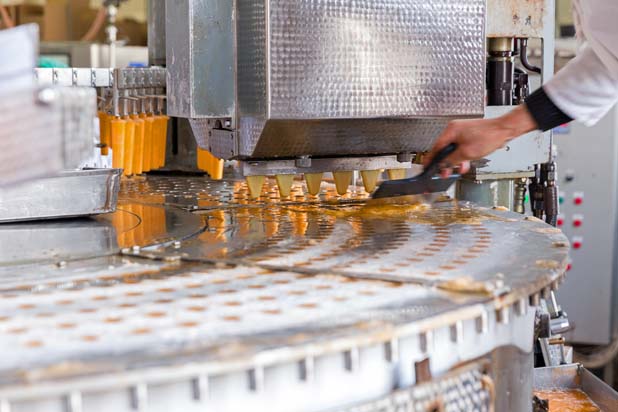Food Processing
 Why use Food Grade?
Why use Food Grade?
The unique properties of rubber as a strong yet flexible material lead to its widespread use in food processing. Rubber polymers are used for seals, gaskets, hoses and conveyor belts.
Variables such as the fat content of the food, time, temperature and the extent of contact between food and rubber can cause chemicals from the rubber to leach in to the food. Lubricants for machine parts and equipment can carbonise or burn, react with steam or caustic cleaners.
Food Grade Seals
FDA compliant Kalrez® parts offer the food and beverage industries a new level of sealing against process contamination, leaching and seal failure. Kalrez® combines thermal and chemical performance with a rubber like sealing ability.
Lubricants
Fluid seals also distributes DuPont™ Krytox® NSF certified H-1 and H-2 oils and greases. NSF H-1 compliance means they may be used wherever there is a potential exposure of the lubricated part to food. Krytox® Food Grade lubricants are serviceable at continuous temperatures between –60° and 300° C. They are completely odourless and tasteless.
When and how does leaching occur?
| Food Transportation | Conveyor Belts, hoses and tubing |
| Pipework | Seals, gaskets, flexible connectors, butterfly valves |
| Pumps | Diaphragms, stators |
| Plate Heat Exchangers | Gaskets |
| Machinery and Storage Tanks | General seals and gaskets |
| Packaging machinery | Seals and rod wipers |
Impact of Leaching
It is inherently undesirable for any chemical component of the rubber to migrate into a foodstuff during processing or storage. Rubber compounds are complex formulations that undergo chemical transformation during vulcanisation.
Rubber components that can potentially migrate include low molecular mass monomers, vulcanising agents, plasticisers, oils and waxes and their breakdown products. For example, polar plasticisers such as di-2-ethylhexyl phthalate are readily soluble in alcohol so plasticised rubbers should not be used in contact with alcoholic beverages.
The compounds 2-mercaptobenzothiazole (MBT) and benzothiazole (BT) may migrate from rubber during the manufacture and storage of food or drink. Research has shown that this might happen. Both MBT and BT migrated from rubber into laboratory solvents.
The main types of rubber components where residues of MBT and BT may be found include natural rubber or nitrile rubber seals and gaskets used in food processing equipment. MBT is formed from two accelerators used in vulcanising rubber: 2-mercaptobenzothiazyl disulphide (MBTS) and N-cyclohexyl-2-benzothiazole sulphonamide (CBS). BT is formed by splitting a disulphide bridge in MBTS
Similarly, the acrylonitrile monomer is of concern to health authorities and is not permitted to migrate at detectable levels so levels of free monomer must be tightly controlled during production.
